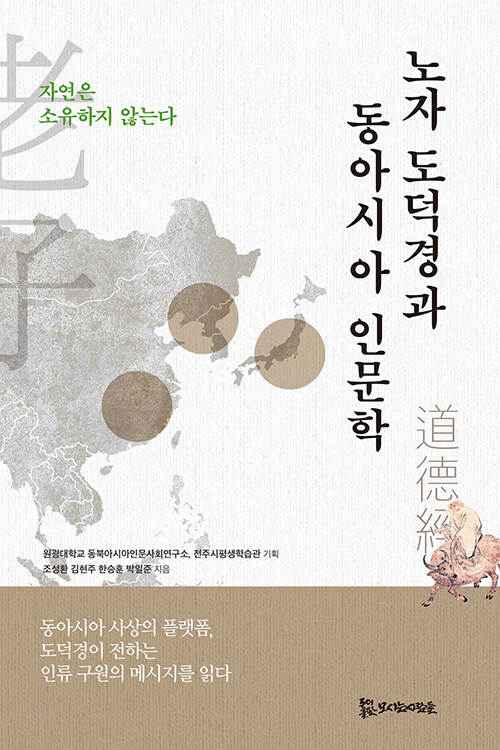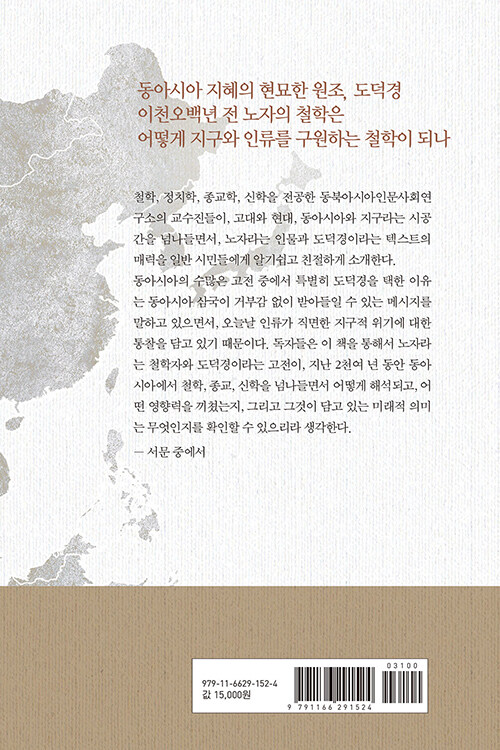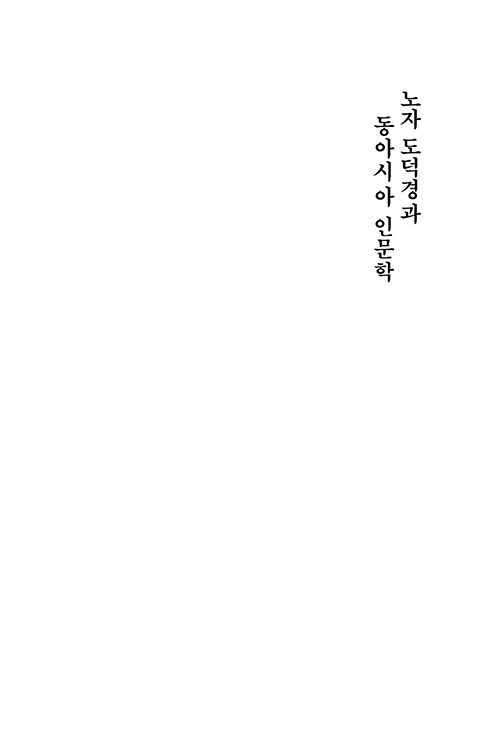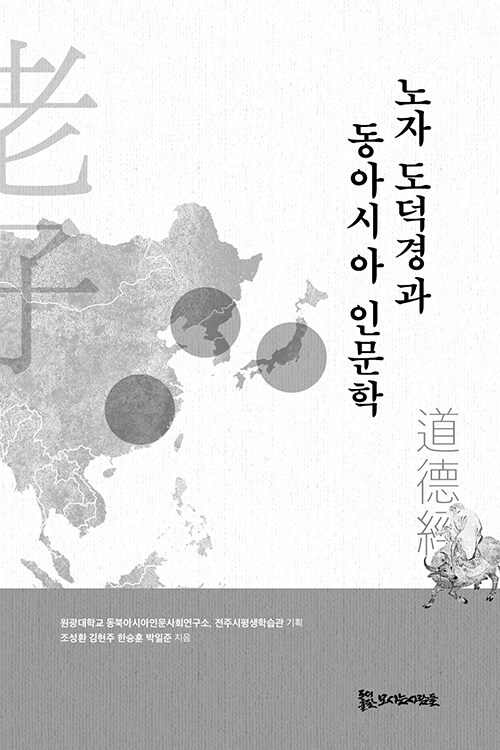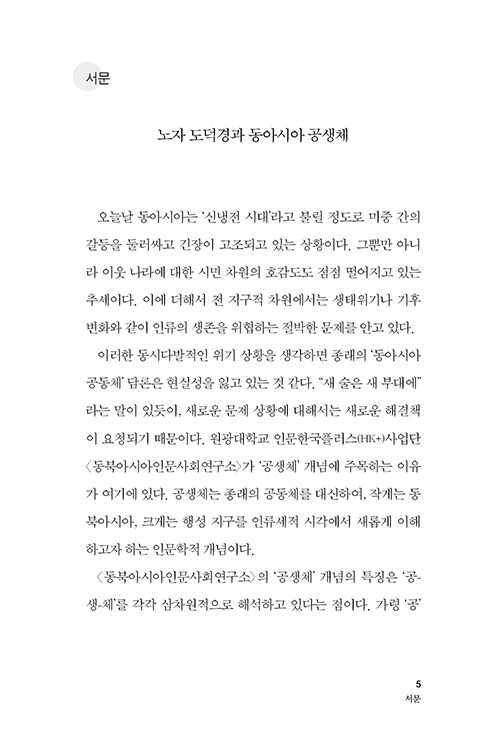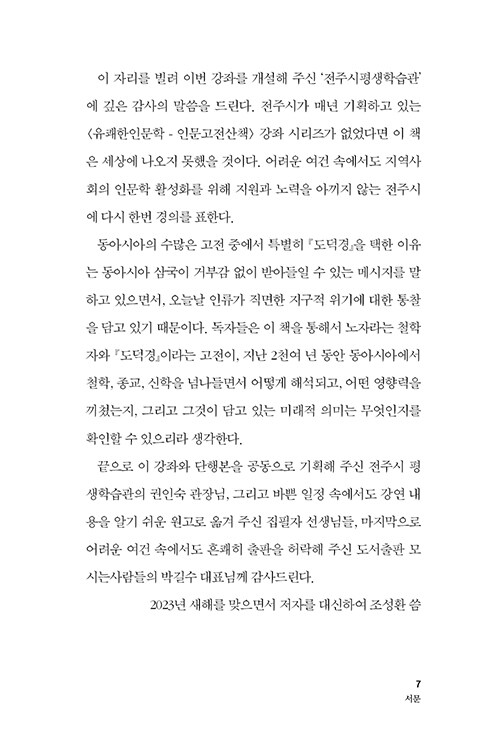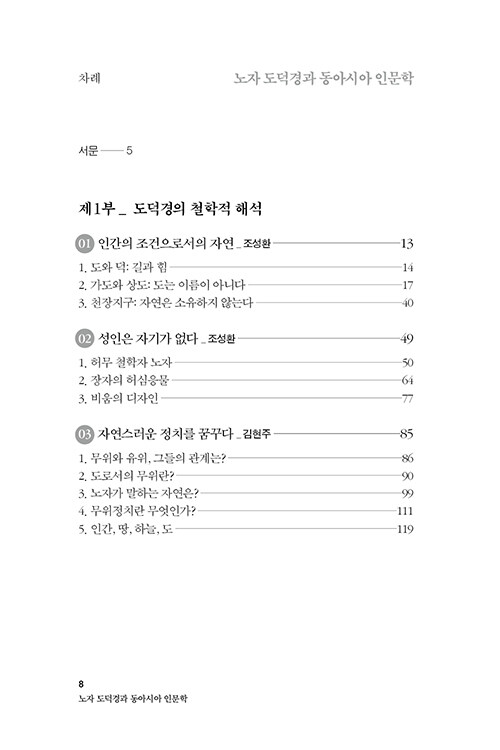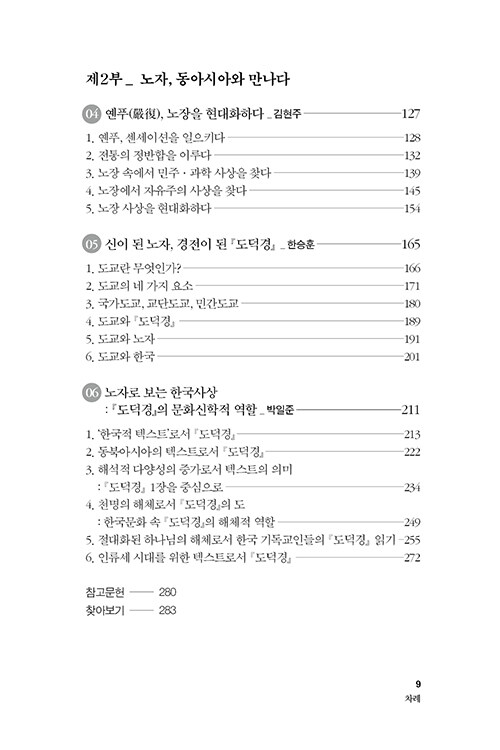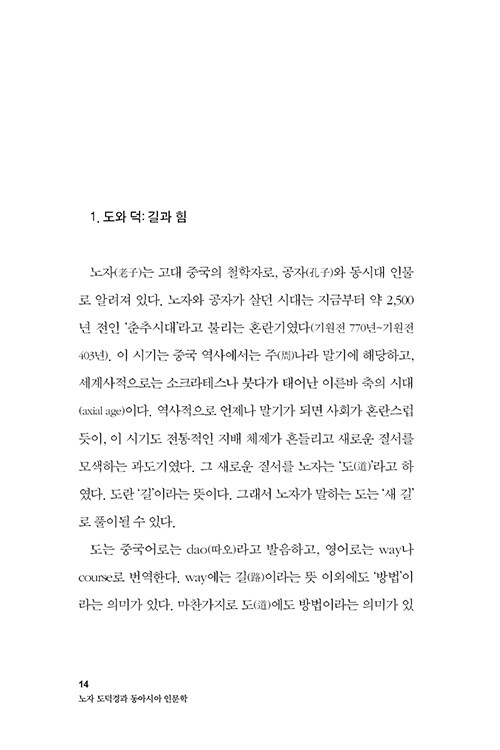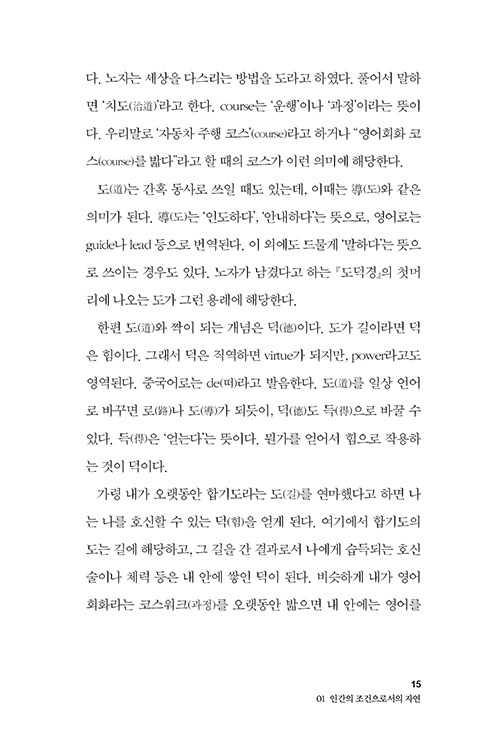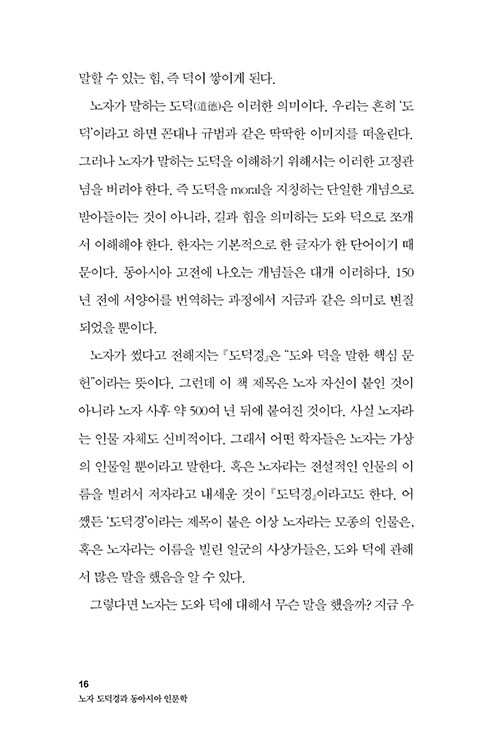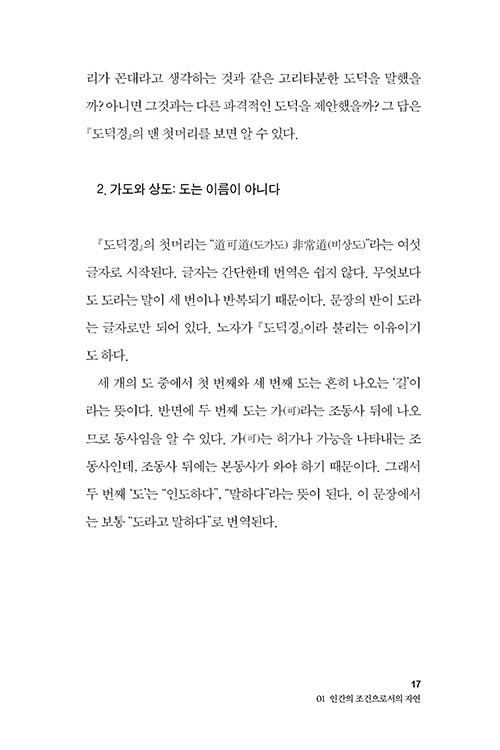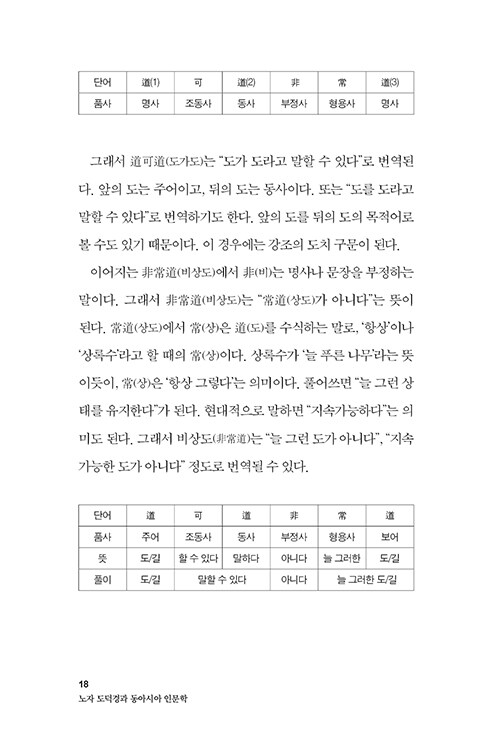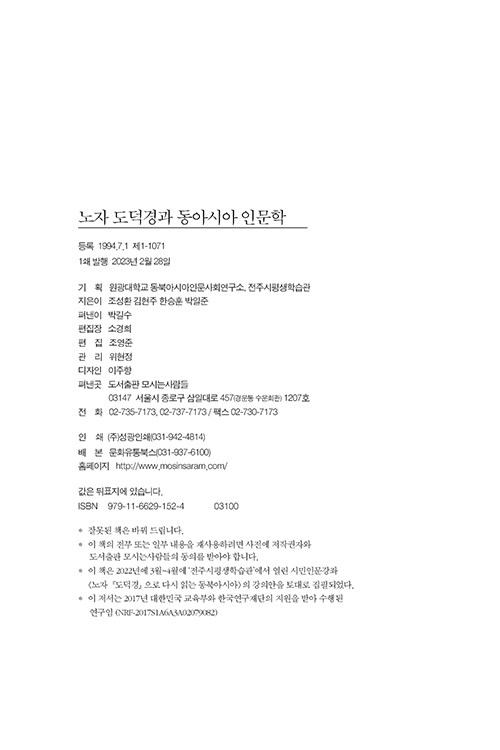대학 (책)
| 유교 (儒敎) |
|---|
 |
《대학》(大學)은 사서오경의 하나인 유교 경전이다. 본래 《예기》(禮記)의 제42편이었으나, 송나라 시대에 성리학이 확립되면서 사서의 하나로 받아들여졌다.
전승[편집]
《대학》의 원작자에 대해서는 정설이 없는데, 주희는 경문 1장을 증자가 지었고, 전문 10장을 증자의 문인이 해설했다고 주장하였다. 이것은 대학의 본문중 증자왈로 시작되는 문구로 기인한 주희 개인의 추측에 의한 단정이였을 뿐이다
경문은 성인이 직접 언급한 진리, 전문은 성인에 버금가는 현인이 경문을 정리한 것이라는 의미이다. 삼강령을 밝힌 부분을 경문으로, 팔조목을 밝힌 부분을 전문으로 보았다. 주희는 사서체제를 정립하면서 공자(논어) -> 증자 -> 자사(중용) -> 맹자(맹자)의 도통이 필요했고 이 과정에서 대학을 증자의 저서라 하진 못하더라도 증자와 관계있는 책으로 만들었다.
그러나 고고학적 성과인 곽점초묘 죽간의 발견으로 자사의 문인들이 작성했을 것이라는 견해가 대세가 되었고 자사나 그의 문인들이 저술한 중용을 계승하고 있다는 주장이 받아들여지고 있는 추세이다 그리고 사서의 시대적 저작 시기도 논어-중용-대학-맹자 순으로 이어진다고 보고 있다
주희가 정이의 설을 따라 3강령 중 ‘親民’을 ‘新民’으로 고치고, 본래 있던 성의·정심·수신·제가·치국·평천하 조 앞에 격물과 치지의 장을 새로 지어 보망(補亡)한 8조목을 만든 이래, 송대 성리학을 존숭하는 이들과 고본 《대학》에 충실하고자 하는 이들 사이에 수많은 논란이 있었다. 왕수인은 ‘친민’이 옳다고 하여 고본 《대학》을 따랐으니, 주자학과 양명학의 차이점 가운데 하나가 된다. 주희는 사서를 대학, 논어, 맹자, 중용의 순으로 읽으라 할 정도로 대학을 중요시했다.
현대 학자들의 견해는 주희는 그가 정의하여 해석한 고전의 시각으로 공자와 맹자를 정의하려 했다면 왕수인은 공자와 맹자의 시각으로 고전을 해석하려 했다는 점이 다르다고 말한다 개인의 시각이냐 공맹의 생각으로 바라보는 시각이냐가 다를뿐이다
내용[편집]
《대학》은 자기 수양을 완성하고 사회 질서를 이루는 과정을 일목요연하게 이론적으로 보여 주고 있다. ‘대학’(大學)이라는 의미는 통치자의 학문이라는 설과 인격자의 학문이라는 설로 나눌 수 있다. 주자는 《대학》이 소학(小學)을 마치고 태학(太學)에 입학하여 처음 배우는 개설서라고 했는데, 오늘날 대학교의 기본 교양 교재와 같은 성격이라고 말할 수 있다.
《대학》은 유가의 주요 사상을 체계적으로 설명하고 있다. 그 내용을 요약하면 수기치인(修己治人), 곧 자신을 수양한 후에 백성을 다스리라는 것이다. 즉 사회의 지도자는 먼저 자기 자신을 수양하고 책임과 의무를 다한 후에 이를 주변 사회로 넓혀 나가야 한다는 것이다. 이러한 내용을 삼강령과 팔조목에 담아 내었다.
삼강령[편집]
- 명명덕(明明德) : 자신의 밝은 덕을 밝게 드러내야 한다.
- 신민(新民) : 자신의 밝은 덕으로 백성을 새롭게 한다.
- 고본 《대학》에 수록된 용어는 친민(親民) : 백성과 친하게 된다.
- 지어지선(止於至善) : 최선을 다하여 가장 합당하고 적절하게 처신하고 행동한다.
팔조목[편집]
- 격물(格物) : 세상 모든 것의 이치를 찬찬히 따져보는 것 → 고본 《대학》에는 없는, 주희가 새로 지어 넣은 조목
- 치지(致知) : 지식과 지혜가 극치에 이르게 하는 것 → 고본 《대학》에는 없는, 주희가 새로 지어 넣은 조목
- 성의(誠意) : 의지를 성실히 다지는 것
- 정심(正心) : 마음을 바로 잡는 것
- 수신(修身) : 자신을 수양하는 것
- 제가(齊家) : 집안을 화목하게 이끄는 것
- 치국(治國) : 나라를 잘 다스리는 것
- 평천하(平天下) : 세상을 화평하게 하는 것
같이 보기[편집]
- 《소학》
- 〈존사〉(尊師): 《여씨춘추》의 〈맹하기〉에 수록
- 〈학기〉(學記): 《예기》에 《대학》과 함께 수록
- 〈치지재격물론〉(致知在格物論) : 사마광 저
- 〈대학고본서〉(大學古本序), 〈대학문〉(大學問) : 왕양명 저
각주
대학 (책) [일어한역]
『대학』(다이가쿠)은 유교 의 경서 중 하나. 남송 이후, ' 나카조 ', ' 논어 ', '孟子'와 함께 4서로 되었다. 원래는 『예기』의 일편이며, 나코 에 의해 만들어졌다고도 진한의 유가의 작이라고도 한다.
내용 [ 편집 ]
주자학 에서 자기수양으로 시작하여 사람들을 구제하는 정치로 단계적으로 발전해 나가는 기본강령이 나타나고 있다고 중요시되었다. 그 내용에는 「명명덕」 「친민」 「지대지선」의 미츠츠나령과 「격물」 「치지」 「성의」 「정심」 「수신」 「제가」 「치국」「 평천하 」 의 하치 조 눈이 제시되었습니다.
수용 [ 편집 ]
4서에 포함된 것으로 동아시아 전역에서 널리 읽혔다. 특히 에도 시대 후기의 일본에서는 『경전여사』 등의 주석서・훈몽서가 활발히 만들어져 향학심이 있는 서민에게 널리 읽혀졌다 [1] . 일설에는, 니노미야 킨지 로가 장작을 짊어지면서 읽고 있는 것도 본서인 것으로 여겨진다 [2] [1] . 또, 패러디 의 대상이 되기도 하고, 예를 들면 세키테이 쿄츠루 의 『경성정사 대객』 등의 희작 · 세련 책[1] [3] 이나, 고전 낙어 의廓噺의 연목 『廓大学』[4] 등이 만들어졌다.
현대어 번역 [ 편집 ]
- 우노 테츠 인역 주 "대학" 코단샤 학술 문고 , 1983 년, ISBN 4061585940
- 가나야 치역주 『대학・나카조』이와나미 문고 , 1998년, 와이드판 2003년
- 아카츠카 충 역주 『신석 한문대계 2 대학・나카죠』메이지 서원 , 1967년, ISBN 9784625570025
- 야마시타 류지 역주 『전석 한문대계 3 대학・나카죠』슈에이샤 , 1974년
- 제바시 전차 편·해설 『중국 고전 명언사전』코단샤 , 신장판 2001년. 코단샤 학술 문고에서도 중판
관련 항목 [ 편집 ]
각주 [ 편집 ]
- ^ a b c 스즈키 토시유키「제3장 『경전 여사』라고 하는 모델」 『에도의 독서열―자학하는 독자와 서적 유통』 평범사, 2007년. ISBN 9784582842272 .
- ^ “ 소년 니노미야 긴지로상의 변용【일본 고서 통신 편집장 소식 27】 ”. 야기 서점 (2018년). 2021년 3월 28일 열람.
- ^ 세이모토 다이세이 편집위원회 『세이모토 다이세이』 제28권, 중앙 공론사, 1987년. ISBN 978-4124007787
- ^ “ 비틀림이나 에세금, 이소의 연어――“금연낙어”의 여름이 끝난다 : 나가이 호히로's eye : 엔터테인먼트·문화 : 뉴스”.요미우리 신문 온라인(2020년 9월 4일) . 2021 년 3 월 28일 열람.
외부 링크 [ 편집 ]
- 대학 - 중국 철학서 전자화 계획
- 『대학(유교 경전)』 - 코트뱅크
예서·대학 [ 편집 ]중국어 한역

『대학 』은 유교 고전 『사서 』 에 속하며 원래는 『예서 』 제42장 으로 전국 시대 말기 부터 서한 초기 사이에 쓰여졌다. 저자는 아직 확실하지 않으며, 공자 이후 유학자들이 지은 것으로 추정되며 , 주희는 증자가 편찬한 것으로 추정한다 [1] .
남송 이전에는 별도로 인쇄된 적이 없었다 . 당나라 이후 한우( Han Yu) 와 이아오(Li Ao) 는 도교를 견지 하고 '대학'과 ' 중용 ' 을 전파하기 시작했습니다 . 북송의 사마광(Sima Guang ) 이 편찬한 『대대귀광』은 대학 독자 저술의 시초가 되었다. Cheng Hao 와 Cheng Yi는 또한 "The Great Learning"의 원본 기사를 발췌하여 " Great Learning Final Version "으로 편집했습니다. 남송의 주희 (朱熙)는『대학장』을 편찬하여 『 논어 』 , 『맹자 』, 『중용』과 함께 『사서』 를 편찬하였다 . 주희에 따르면 『대학』은 공자와 그의 제자들이 남긴 유서이자 유교 입문서이다 . 그러므로 주희(朱熙)는 이 책을 『사서』 중에서 1위로 꼽았다.
"대학"은 여러 장으로 나누어지지 않았습니다. 나중에 주희는 『대학』을 내용에 따라 고전 1장과 전기 10장으로 나누었습니다. 또한 그는 “경전의 한 장에는 공자의 말이 있는데 증자가 그것을 기술하였고, 전기의 열 장에는 증자의 뜻이 있는데 그의 제자들이 그것을 기록하였다”고 했습니다. '중용'은 '자자 '라는 뜻이다. 시자가 도교의 상실을 걱정해서 지은 것이다." 그러나 이 말은 신빙성이 없다. 청나라 학자 대진(大眞) 은 어렸을 때 스승에게 이렇게 물었습니다. “공자의 말과 증자가 전한 것을 우리가 어떻게 알 수 있습니까?” 제자들이 녹음했어요?" 선생님이 대답했다: "이 사람은 주웬공(Zhu Wengong)입니다 . 말했습니다." 그러나 대진은 주나라가 송나라 보다 2천년이나 떨어져 있는데 , 문주공은 왜 이런 사실을 알 수 있었겠는가? 물었을 때 선생님은 말문이 막혔다.
내포 및 적용 [ 편집 ]
- "대학"은 단순한 언어, 깊은 의미, 광범위한 영향력을 가지고 있으며 지난 2 천년 동안 고상한 이상을 가진 수많은 사람들이 유교를 엿 보기 위해 이곳에 왔습니다.
- 실용적인 관점에서 볼 때 이 글은 현대인에게 어떻게 행동하고, 일을 하고, 경력을 쌓는가에 대한 심오한 깨달음의 의미를 가지고 있습니다.
- 중화민국의 아버지 쑨원(孫文)은 민족주의 제 6 강의 《 인민 삼원칙》 에서 이렇게 말했다. 외국에서는 근본적으로 수양에서 출발하여 중국 고유의 지식을 중국의 고유한 지식에 응용해야 한다. 이 원칙을 먼저 회복해야 민족정신과 민족적 위상을 회복할 수 있다." 그리고 "삼민주의"도 조항에 포함되어 있습니다 . 중화민국헌법 제1조 . '대학'을 공부하는 것도 ' 중화민국 헌법 ' 의 법적 근거를 이해하는 데 도움이 된다는 것을 알 수 있다.
"대학"에 대한 철학적 성찰 [ 편집 ]
"대학"의 철학적 사상은 주로 삶과 일의 가장 근본적인 원칙을 가르치는 것입니다. 책 전체는 윤리 , 철학 , 정치를 통합 하고 개인 수양과 사회 정치의 관계를 설명합니다. 송나라 유학자들은 3강 8 품론을 제시했다 .
- 세 가지 프로그램은 다음을 의미합니다.
- 밍밍데
- 사람들에게 가까이
- 완벽함에 멈춰라
- 8개 항목은 다음을 의미합니다.
첫 번째 장(章)은 주희가 경전이라 부르는 대강(大論)으로 삼대강과 8품목의 통일성을 말하며 개인의 '명명덕'(사물에 대한 탐구, 지식, 성실, 바른 마음, 그리고 자기 수양), "국민과 가까워지는 것"(가정을 조직하고, 나라를 다스리며, 세계에 평화를 가져오는 것), "완전한 결말"의 상태를 달성하기 위해.
삼도팔품은 내성(内聖)과 외왕(八王) 으로도 해석할 수 있는데 , 내성(内聖) 은 자기 자신의 관리와 수련이고, 외왕(兩王)은 외부 세계에 대한 관리와 행동이다. 여덟 가지 항목 중 '수양'을 기본으로 삼고, '속성'은 '명백한 덕'을 뜻하며, 여기에는 '사물 탐구', '지식', '성성', '정의'가 포함되며, 이는 자기 수행의 기초이자 방법이다. 외성(聖賢) '왕'은 '가문을 다스림', '나라를 다스림', '천하를 평안함' 등을 포함하여 '국민과 친함'을 말하며, 이는 수양의 목적이다.
명명덕(Ming Ming De)은 밝은 덕을 꽃피우게 한다는 뜻으로 내면에 있다. '국민과 가까워진다'는 것은 국민이 빠른 변화와 발전을 이룰 수 있도록 하고, 대외적인 여론을 혁신할 수 있게 한다는 뜻이다. '최고의 선에서 멈추라'는 것은 자신의 도덕성과 공동체의 도덕성이 극도로 좋은 상황에 도달하거나 그 상태에 있고 이를 고수하는 것을 말한다.
"Gewu"는 사물의 원리를 연구한다는 의미입니다. Zhizhi는 지적 양심을 달성하는 것을 의미합니다. 성실함이란 생각이 성실하여 겉과 속이 일관될 수 있도록(그래서 조심해야 함 ) , 위선적이지 않고 자신이나 남을 속이지 않는 것을 의미합니다. 마음을 바로잡는다는 것은 자신의 마음을 바로잡고 악한 의도를 없애는 것을 의미합니다. 수련이란 몸(생각, 말, 행동을 포함하여)을 잘 수련하는 것을 의미합니다.
'가족을 다스린다'는 것은 가족을 다스린다는 뜻으로, 윤리적으로는 아버지와 아들이 친족관계를 맺어야 하고, 어른과 동생이 질서를 잘 유지해야 하며, 가족이 화목하고 화목해야 한다는 뜻이다. 나라를 다스린다는 것은 나라를 잘 다스린다는 뜻인데, 교육 외에 법령도 필요합니다. "Ping Tianxia"는 주로 정치적 법령을 사용하여 세계(여러 국가 포함)에 평화를 가져오는 것을 의미합니다.
전체 개요의 의미는 자신의 밝은 미덕을 보여주고 사람들을 사랑하며 모든 사람이 혁신하여 완벽한 상태를 달성하도록 하는 것입니다. 사람이 덕을 발휘하려면 먼저 나라를 잘해야 하고, 나라를 잘하려면 먼저 가족을 잘해야 하며, 가족을 잘 지내려면 먼저 자기 가족을 잘 보살펴야 한다. 먼저 자신을 수련해야 하고, 몸을 수련하려면 먼저 마음을 바르게 해야 하며, 올바른 기질을 가지려면 먼저 생각을 진실하고 거짓이 없게 해야 하며, 생각이 참되고 진실되게 하려면 먼저 먼저 지식을 늘려야 합니다. 지식을 늘리려면 모든 것을 한 번에 이해할 수 있어야 합니다.
다음은 나라를 다스리고 세계에 평화를 가져오는 방법에 대한 설명입니다. 주로 결거의 길과 세 가지 주요 법률을 홍보합니다.
- 재정 규칙
- 취업규칙
- 백성을 사랑하는 법칙
메모 [ 편집 ]
- 남송(南宋)의 주희(朱熙) 가 지은 《 대학 장문》(大文章文集) 1권 .
번역된 버전 [ 편집 ]
- 영국인 James Legge는 공자의 논어, 대학, 중용의 교리(공자의 논어, 대학, 중용의 교리)를 번역했습니다.
[ 편집 ] 보기
메모 [ 편집 ]
참고문헌 [ 편집 ]
중국 서적 [ 편집 ]
- 라오시광 (Lao Siguang) "대학 교리의 새로운 번역 및 주석", 중국 대학 출판부, ISBN 9789622019034 .
- 이탁연(Li Zhuoran): " "대학"과 유교 군주제 교육 - "대학"과 "대학의 보충" 중 "대학"의 해석과 발전에 대하여 (페이지 아카이브 및 백업, 인터넷 아카이브 에 저장 됨 ) "
일본 서적 [ 편집 ]
- "대학" 번역 및 주석: 우노 테츠로, 고단샤 학술 도서관 , 1983, ISBN 978-4-06-158594-2
- 가나 야 하루, 이와나미 문고, "중용의 대법"의 번역 및 주석 , 1998년, 히로시마 판, 2003년
- 아카츠카 다다시의『신바나 중국어과 2중의 대학』 메이지 쇼인 의 번역 및 주석
영어 도서 [ 편집 ]
- Berthrong, John H. 유교 방식의 변형 Westview Press, 1998.
- 공자와 황치충. 공자의 논어: 윤유. 옥스퍼드 대학교 출판부 US, 1997.
- De Bary, Theodore 등 중국 전통의 출처: 초기부터 1600년까지 Columbia University Press, 2000.
- Gardner, Daniel K. "유교 주석과 중국 지적사." 아시아 연구 저널, 57권, 2호(1998년 5월): 397-422
- Gardner, Daniel K. The Four Books. 후기 유교 전통의 가르침. Hackett Publishing. 2007.
- Gardner, Daniel K. "원리와 교육학: 추자와 4권." Harvard Journal of Asiatic Studies, 44권, 1호(1984년 6월): 57-81.
- Legge, James (trans.) 공자: 유교 논어, 대학 및 중용의 교리. 뉴욕: 도버 1971.
- 파운드, 에즈라. Ta Hio -The Great Learning- 새로 미국 언어로 번역됨. 런던: Stanley Nott Ltd의 Kynoch Press, 1936년.
- 왕팅(Wang, Ting), "중국 문화와 학습의 이해", 호주 캔버라 대학교 논문, 2006.
- Yao, Xinzhong 및 Hsin-chung Yao. 유교 입문. Cambridge University Press, 2000.
- 장웨이위안(Zhang Weiyuan), "유교문화의 평생학습 개념: 성인학습자에 미치는 영향." 평생교육학회지 27권 5호(2008년 9~10월): 551-557.
추가 읽기 [ 편집 ]
[ 위키데이터에서 편집됨 ]
 " 의례서/대학(설명판) "
" 의례서/대학(설명판) " " 사서의 장과 문장에 관한 노트 모음 / 대학의 장과 문장 "
" 사서의 장과 문장에 관한 노트 모음 / 대학의 장과 문장 " " 의례서/대학 "
" 의례서/대학 " " 황실 고대 및 현대 도서 컬렉션, 대학부 성리학, 고전 및 고전 컬렉션 ", Chen Menglei의 " 고대 및 현대 도서 컬렉션 " 에서
" 황실 고대 및 현대 도서 컬렉션, 대학부 성리학, 고전 및 고전 컬렉션 ", Chen Menglei의 " 고대 및 현대 도서 컬렉션 " 에서
외부 링크 [ 편집 ]
Great Learning
This article includes a list of general references, but it lacks sufficient corresponding inline citations. (October 2014) |
| Great Learning | |||
|---|---|---|---|
| Chinese name | |||
| Traditional Chinese | 大學 | ||
| Simplified Chinese | 大学 | ||
| Hanyu Pinyin | Dàxué | ||
| |||
| Vietnamese name | |||
| Vietnamese alphabet | Đại Học | ||
| Chữ Hán | 大學 | ||
| Korean name | |||
| Hangul | 대학 | ||
| Hanja | 大學 | ||
| |||
| Japanese name | |||
| Kanji | 大学 | ||
| Kana | だいがく | ||
| |||
The Great Learning or Daxue was one of the "Four Books" in Confucianism attributed to one of Confucius' disciples, Zengzi.[1] The Great Learning had come from a chapter in the Book of Rites which formed one of the Five Classics. It consists of a short main text of the teachings of Confucius transcribed by Zengzi and then ten commentary chapters supposedly written by Zengzi.[2] The ideals of the book were attributed to Confucius, but the text was written by Zengzi after his death.
The "Four Books" were selected by the neo-Confucian Zhu Xi during the Song dynasty as a foundational introduction to Confucianism. Examinations for the state civil service in China came to follow his lead.
Writing and influence[edit]


Confucius, who incorporated ideas from earlier philosophers, compiled or edited the Classic of Rites and the Spring and Autumn Annals, two of the Five Classics. Confucius' student Zengzi wrote the introduction and exposition of the Great Learning. Zengzi lived from 505 to 436 BCE. Confucius taught 100 pupils, 72 of whom mastered his teachings . It is still unclear how much his students wrote and edited.[citation needed]
The Great Learning developed from many authors adapting to the needs and beliefs of the community at the time. The Cheng brothers, Yi (1033–1107) and Hao (1032–1085) both utilized the Great Learning's philosophies. Their ideas met with strong official opposition, but were reconstituted by Zhu Xi. Cheng's idea of yi was that it was identical with nature, which he believed was essentially good. Cheng's yi emphasized the necessity of acquiring knowledge.[3]
During the Southern Song Dynasty, Zhu Xi rearranged the Great Learning and included it in the Four Books, along with the Doctrine of the Mean, the Analects of Confucius and the Mencius. Zhu Xi separated the Great Learning, which was originally a chapter in the Classic of Rites.[4] Zhu Xi organized the book as Jing followed by ten expositions. Zhu Xi was a student of Li Tong. Zhu Xi developed the Chengs' Confucian ideas and drew from Chan Buddhism and Daoism. He adapted some ideas from these competing religions into his form of Confucianism.[5]
Li Ao, a scholar, poet, and official, used and brought attention to the Great Learning. After the Song and Yuan Dynasties, The Great Learning became a required textbook in schools and a required reading for imperial examinations.[5] During the Warring States Xunzi and Mengzi were influenced by the Great Learning. The Great Learning also greatly influenced countries like Japan and Korea.[6][7]
Such critics such as Lu Xiangshan and Wang Yangming later disliked the Great Learning because of the stress on scholarship rather than action. Wang Yangming rejected Zhu Xi's changes and returned the text to the original, from the Classic of Rites. During the Han dynasty the Great Learning rose to prominence, and the Classic of Rites had to be re-organized by Dai De and Dai Sheng.[8] They divided the book into five sections. This included the Great Learning, the Doctrine of the Mean, the Evolution of Rites, the Yili, and the "Etiquette and Rites".[citation needed]
Han Yu and Li Ao both used The Great Learning. Li Ao incorporated a lot of Buddhist and Taoist ideas into his work. Zi Si – Confucius's grandson – is said to have taught Mencius and written the Doctrine of the Mean. He may also have written the beginning of the Great Learning. Ma Rong edited the Great Learning in the Han dynasty, giving his views of the general meaning.[9]
Principal teachings[edit]
- Achieving a state of "rest in the highest excellence" and refining one's moral self to "illustrious virtue" that will be an example for all people of the realm.
- The "point of rest being known", the "goal of action can be determined", and "deliberation will be followed by the attainment of the desired end."
- Ample rest and reflection such that one achieves peace of mind. When one is calm and reflected, the Way will be revealed to them.
- Setting priorities and knowing what is important is essential in one's quest for moral refinement, for it allows one to focus on that which is of the greatest importance and that which is in line with the Way as outlined in Confucian teachings.
- One must bring his affairs and relationships into order and harmony. If one hopes to attain order in the state, he must first bring his own family and personal life into order through self-cultivation and the expansion of one's knowledge and the "investigation of things."
- Each and every man is capable of learning and self-cultivation regardless of social, economic or political status. This, in turn, means that success in learning is the result of the effort of the individual as opposed to an inability to learn.
- One must treat education as an intricate and interrelated system where one must strive for balance. No one aspect of learning is isolated from the other and failure to cultivate a single aspect of one's learning will lead to the failure of learning as a whole.
Meaning of "Investigation of Things"[edit]
The text sets up a number of controversies that have underlain Chinese philosophy and political thinking. For example, one major controversy has been to define exactly the investigation of things. What things are to be investigated and how has been one of the crucial issues of Chinese philosophy.
One of the first steps to understanding The Great Learning is to understand how to "investigate things". This did not consist of scientific inquiry and experimentation, but introspection, building on what is already "known" of "principle".[10] True introspection was supposed to allow the mind to become all knowing with regards to morality, relationships, civic duty and nature.[10]
The Great Learning and education in China[edit]
The Great Learning as we know it today is the result of multiple revisions and commentaries by a number of Confucian and Neo-Confucian scholars. The Great Learning, along with the Doctrine of the Mean had their beginnings as chapters within the Book of Rites. Both were removed from the Book of Rites and designated as separate, and equally significant, works by Zhu Xi. In the winter of 1190 CE Zhu Xi published the Four Masters, a collection of the Great Learning, Doctrine of the Mean, the Mencius and the Analects.[11] These four texts soon became the initial basis of study in the Chinese imperial examination system. Zhu Xi was prompted to refine the Great Learning and incorporate it into the curriculum as he felt that the previously utilized Classics were lengthy and too difficult to comprehend by the common individual to be used as an educational foundation for Confucian thought.[11] Utilizing the much shorter and more comprehensible Four Books would allow Zhu to reach a much greater audience.[11] To aid in comprehension of the Great Learning, he spent much of his life studying the book and published a series of commentaries explaining the principal teachings of the text. The Daxue itself gets its name from "ta-jen chih hsueh," referring to the education of adults. Unlike many scholars before him, Zhu Xi presents the Great Learning as the way of self cultivation and governance that is to be studied by all people, not only those in, or seeking, political office.[12]
Impact on education in China[edit]
Although the Imperial Examination System is no longer used as a means of determining one's place in the social hierarchy, education and the teachings of the Great Learning remain an integral part of modern educational and political culture in China. In fact, a number of scholars believe that all education in mainland China is based on Confucianism to some degree although many individuals, students and teachers alike, are unaware of the Confucian influence on their education. The Great Learning was written and later published as its own book, to serve as an introduction and foundational guide for the further study of Confucian texts. The Great Learning provides a step-by-step illustration of how all aspects of society, ranging from the refinement of the self to the order within one's household or state is ultimately dependent upon the expansion of one's knowledge.[13]: 2
Effects on education in Modern China[edit]
- A Valued Education: China is characterized by a great appreciation for education as it is still viewed as a means of securing a rewarding career, thus elevating an individual in terms of social status. The modern schooling system relates directly to the teachings of the Great Learning as educational institutions represent the primary sites for the expansion of knowledge and the investigation of "things." It is quite common in China for great sums of money to be spent to secure the best possible education. Due to the high value of a quality education, illiteracy and drop-out rates throughout China are very low.[13]: 2–3
- Memorization: Due to the service examination system which involved the memorization and recitation of Confucian Texts, including The Great Learning, memorization remains a key element in Chinese learning. Throughout much of China, it is still held that one should memorize as much knowledge as they possibly can, as one is incapable of the creation of intelligent thought without first obtaining enough basic knowledge. The focus on exams and the recitation of knowledge is, however, often attributed to "surface learning," but one should note that memorization is not used in isolation, but represents only one aspect of a student's quest for knowledge and self-cultivation. This focus on memorization can be seen in the consistency in which Chinese students excel in mathematics and sciences.[13]: 4–8
- Working Collaboratively: Due to the Confucian values of harmony, relationship and moral cultivation as presented in the Great Learning, students in China were traditionally taught the value of collaborative learning. To this day, group learning remains the most popular learning method throughout the bulk of China.[14]: 554–555
- Hard Work: The Great Learning states that all people are to expand their knowledge and cultivate themselves. This, in turn, is often interpreted to mean that all people are capable of learning, and that failure is not a result of a lack of ability, but a lack of effort. As a result of this philosophy, Chinese students are known worldwide as being very hardworking, putting a great deal of effort into everything they do.[14]: 555
- A Respectful Learning Atmosphere: Due largely to the high value of a quality education and the Confucian teaching of respect for one's elders, educators in Chinese culture are treated with the utmost respect. In fact, teachers are customarily granted the same level of respect given to a parent. As a result of this level of respect for educators and the institution as a whole, students are not quick to interrupt or otherwise challenge the authority of those delivering the knowledge required for a successful future.[13]: 5, 8
Impact on Chinese politics[edit]
The Great Learning played a major role in Chinese politics as it comprised one of the texts incorporated into the Imperial service examination system. Students would be tested on their knowledge of the Five Classics and Four Books as a qualification for an occupation in political office. If a student possessed adequate knowledge of the texts, they would be awarded a prestigious place in government. These exams allow anyone of sufficient knowledge and skill to obtain a place in office, as exams were based solely on one's ability. One's social or financial status did not play a role in the exam system. The text of The Great Learning provides an educational basis for those aspiring to obtain a leadership role. In addition to self-cultivation and the expansion of one's knowledge, the Great Learning goes into significant step-by-step detail with respect to the qualities of a proper ruler. The text then goes on to describe the projected quality and stability of the state if its ruler follows the guidelines described therein. One such passage states that a person should "cultivate himself, then regulate the family, then govern the state, and finally lead the world into peace" There are two common interpretations of this passage. One common interpretation of this passage is that before one can hope to successfully lead the people, he/she must first cultivate himself (herself) by bringing order to. One may also interpret this passage to be stating that once one has reached a sufficient level of cultivation, he/she should seek a position in office with which to lead the people of the state in accordance with the values and practices outlined in the Great Learning and other such Confucian and Neo-Confucian texts.[13]: 3
A term used in the text, "qin-min" (親民) which James Legge, following Zhu Xi, amended to "xin-min" (新民) and translated "renovating the people" instead of "loving the people", became the name of the People First Party (Republic of China), one of the minor parties in Taiwan.[citation needed]
There are several works that were written to give commentaries on Great Learning, such as Zhen Dexiu's Expanded Meaning of the Great Learning (Daxue Yanyi) and Qiu Jun's Complement to the Expanded Meaning of the Great Learning (Daxue Yanyibu).
Textual significance[edit]
The Great Learning is significant because it expresses many themes of Chinese philosophy and political thinking, and has therefore been extremely influential both in classical and modern Chinese thought. The Great Learning represented a key aspect of the Chinese curriculum for nearly 1500 years and can be found in virtually all aspects of Chinese culture. The Great Learning within the Chinese curriculum acted as a "springboard" for further learning, "self cultivation and investigation of things." Through self-cultivation one can bring order and harmony to one's mind, personal life, family, state and the world as a whole. By defining the path of learning (Dao) in governmental and social terms, the Great Learning links the spiritual realm with daily life, thus creating a vision of the Way (Dao) that is radically different from that of non-action as presented by Daoism. The Great Learning, on the other hand, requires action on the part of the individual towards the ultimate goal of self-cultivation through the "expansion of knowledge and the investigation of things." The Great Learning presents Confucianism as being this-worldly rather than other-worldly. As opposed to basing its authority on an external deity, the Great Learning bases its authority on the practices of ancient kings.
References[edit]
Citations[edit]
- ^ 王, 月川. "儒家经典重释的当代意义——《大学》《中庸》讲演录(之一)". 维普期刊专业版. Retrieved 20 September 2021.
- ^ 广西师范大学出版社 (2 January 2020). https://zhidao.baidu.com/question/1889199245138731428.html. Retrieved 20 September 2021.
- ^ De Bary, Theodore, et al. Sources of Chinese Tradition: From Earliest Times to 1600 Columbia University Press, 2000.
- ^ Wertz, Richard. 2008. "Chinese Classic Texts".
- ^ a b Thompson, Kirill (3 September 2015), "Zhu Xi", in Zalta, Edward N. (ed.), The Stanford Encyclopedia of Philosophy, Metaphysics Research Lab, Stanford University, retrieved 20 September 2021
- ^ Tucker, John (18 February 2018), "Japanese Confucian Philosophy", in Zalta, Edward N. (ed.), The Stanford Encyclopedia of Philosophy (Spring 2018 ed.), Metaphysics Research Lab, Stanford University, retrieved 20 September 2021
- ^ "Confucianism in Korea ." Encyclopedia of Religion. . Encyclopedia.com. 8 Sep. 2021
- ^ Müller, Max, ed. (1879). "Preface". The Sacred Books of China. The Sacred Books of the East. Vol. 3. Trans. James Legge. Oxford: Clarendon Press. pp. xviii–xix. Retrieved 31 May 2011.
- ^ Zisi.
- ^ a b Gardner, Daniel K. The Four Books. The Teachings of the Later Confucian Tradition. Hackett Publishing. 2007.
- ^ a b c Gardner, Daniel K. "Principle and Pedagogy: Chu Hsi and The Four Books." Harvard Journal of Asiatic Studies, Vol. 44, No. 1 (Jun., 1984): 57–81.
- ^ Gardner, Daniel K. "Confucian Commentary and Chinese Intellectual History." The Journal of Asian Studies, Vol. 57, No. 2 (May, 1998): 397–422
- ^ a b c d e Wang, Ting. "Understanding Chinese Culture and Learning." Diss. U of Canberra, Australia. 2006.
- ^ a b Zhang, Weiyuan. "Conceptions of lifelong learning in Confucian culture: their impact on adult Learners." International Journal of Lifelong Education, Vol. 27, No. 5 (September–October, 2008): 551–557.
Bibliography[edit]
- Berthrong, John H. Transformations of the Confucian Way. Westview Press, 1998.
- Confucius, and Chichung Huang. The Analects of Confucius: Lun Yu. Oxford University Press US, 1997.
- "Daxue." Encyclopædia Britannica Online. 2008. Encyclopædia Britannica. 27 October 2008 <http://www.britannica.com/EBchecked/topic/579524/Daxue >
- Legge, James (trans.) Confucius: Confucian Analects, The Great Learning and The Doctrine of the Mean. New York: Dover 1971.
- McGivering, Jill. "China's Thriving Confucian Schools." 2008. 28 Oct. 2008. <http://news.bbc.co.uk/2/hi/asia-pacific/7169814.stm [permanent dead link]>
- P.A.P. Blog "Human Rights Facts (55): China, Confucianism and Authoritarianism" 2008. <http://filipspagnoli.wordpress.com/2008/08/20/human-rights-facts-55-china-confucianism-and-authoritarianism/ [permanent dead link]>
- Pound, Ezra. Ta Hio -The Great Learning- Newly Rendered into the American Language. London: The Kynoch Press for Stanley Nott Ltd, 1936.[1]
- Yao, Xinzhong and Hsin-chung Yao. An Introduction to Confucianism. Cambridge University Press, 2000.
- "Zhu Xi". anhuinews.com. Anhui, China. 2007 [2]

